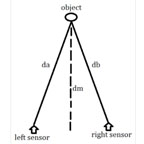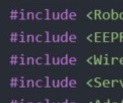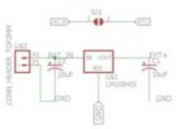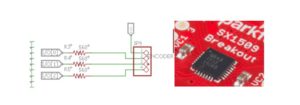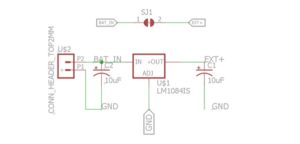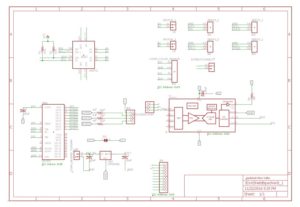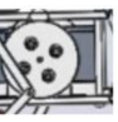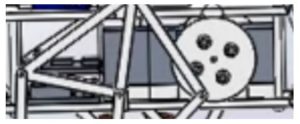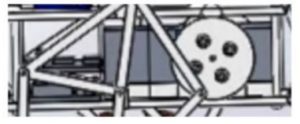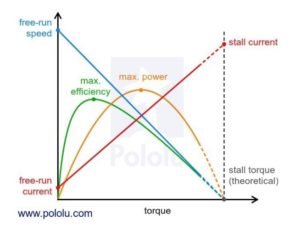Fall Biped 2016- Project Manager- Managing
Table of Contents
By: Ijya Karki (Project Manager)
Introduction
Project Manager Roles include certain tasks that must be completed, example:
- Defining WBS
- Level 1 Requirements
- Creating / Managing Schedule
- Creating / Managing Budget
- Final Project Video/ Documentation
There is a split of skills that a good project manager must possess, looking at the above list these skills can be differentiated with the words creating and managing. The easier of the two tasks include the creating. Documentation and guidance from the company CEO and President make creating a do-able process. The harder of the two skill sets is the managing portion.
Complications
What makes managing difficult? Managing can be difficult when one is working with their class mates and friends. There has to be a degree of authority established in the group so that there is an understanding that the Project Manager has the final says. This can become difficult when managing friends that one has spent years in class with.
Mistakes
From my communications class, I learned that these are typical issues that can arise when leading a group:
- Not establishing authority at all
- Failing to assign tasks
- Failing to follow up on task progression
- Failing to hold members accountable for failing to accomplish tasks
- Being too lenient on pushing the deadlines back
- Aggressively establishing authority
- Expressing the “I know more than you” attitude
- Assigning tasks with ridiculously unreasonable due dates
- Talking over members during meetings
- Passive Aggressively expressing feelings when members cannot accomplish tasks
- Taking out anger on members grades
- Being too friendly
- Letting anything slide by
- Neglecting due dates because they are trying too hard to make sure team likes them
Suggested approach
No one has perfecting good managing skills but these are suggestions and insights that can help one take a better approach than the mistakes listed above. Being PM doesn’t mean there is a choice that has to be made between friendship or PM roles. One can keep both tittles if they approach their responsibilities correctly.
- Don’t be afraid to assign tasks to teammates- In fact, as PM, one has to assign tasks to members. Although your teammates are smart enough to know what steps must be completed to successfully build your robot, it is still helpful to assign tasks and deadlines.
- During the old business portion of meeting minutes, ask for a progress about how far each member is coming with their tasks. They may need help and you can point them to the correct person that can help them. Or they might have forgotten about their tasks and the question will serve as a reminder.
- Let your members know that you will hold them accountable if they miss the deadline. Staying honest from the start is a better approach than giving off the vibe that it’s okay for the teammates to turn in material late but then taking points off from their grade. Keeping an open communication is important to finding the balance of managing. If your members know from the start that failing to meet deadlines has consequences, then they will not have a valid reason to be upset at their grade if they fail to complete tasks on time.
- Assign tasks with reasonable deadlines (depending on the task)
- Some tasks are ongoing processes (like coding or updating requirements)
- Set mini deadlines for various steps of the task
- Example 1: ask ENC to produce code for parts of your robot for various demonstrations that occur throughout the semester ( PDR, CDR)
- Example 2: If your systems engineer has to update the requirements, set mini deadlines for each draft (requirements continuously change throughout the year because they keep improving during each revision)
- If a member cannot meet a deadline for valid reason (tests in other classes, presentation in 400D that is of more priority) then it is alright to push the deadline back
- However, document in the meeting minutes the valid reason for changing the deadline
- Avoid getting in the habit of continuously changing deadlines
- One way to avoid this is by assigning tasks two weeks in advance so that you can check up on them and they have more than enough time to work on it
- Never assign last minute tasks (unless it is an emergencies)
- Your teammates have other classes they are also studying for and they will not appreciate last minute requests
- Do not blame members for failures
- A part of being PM means that you must keep the motivation and spirit of the group alive. If you have a negative attitude then that will affect the entire group.
- Singling a member out and blaming them for problems will not solve the issue. Instead, you can talk to them to see why they lacked in their part and understand what needs to be changed so that they will not run into the same problem with the next task that is assigned to them.
- Understand that you are a team. This means that no one can make a mistake alone. Although each member has individual tasks, the work you produce alone is collectively representative of the whole team. This means that one individual cannot be blamed for problems. Ultimately, the project manager is the most responsible individual for the group.
- When grading member, make sure to split up grades for each assignment into parts so that they can get points for all aspects of their work. Do not just assign a pass or fail grading system. Let them know that long as they try their best then their grade will match that.
- Example: Grading for meeting minutes can be broken down to different parts.
- The grade can be out of 10 points total.
- 5 points allocated to arrival time
- 5 for arriving on time
- 4 for arriving within 15 minutes past start time
- 3 for arriving within 30 minutes and past 15 minutes of start time
- 2 for arriving past 30 minutes of start time
- 1 for arriving past 60 minutes of start time
- 3 points allocated to participation
- 3 points for actively participating during the meeting
- 2 points for participating only during their part
- 1 point for
- 2 points allocated for completing the meeting minutes
- This way, the members will not lose points heavily for not taking meeting minutes one week if they are active participants of each meetings.
- Example: Grading for meeting minutes can be broken down to different parts.
Teammates that Lack Passion
In the event that a member in your group lacks passion, it is important to recognize these members from the start. The best solution can be to communicate with the member and figure out the reasoning behind why they are not committed and trying your best to motivate them. If that fails then you can converse with the Division manager to try and change or find a solution to the problem. Maybe your teammate wants to be in another group or there is a well skilled individual in another group that can help your teammate out. If all else fails, then communicate to the instructor the issue and the solutions you have already tried. Do not prolong this process, the further into the semester you go the more it will affect your grade if a teammate is unresponsive, uninterested, and idle. Be aware that if one of your teammates drop the course then you are responsible to complete both PM duties and the duties of the member that dropped.
Teammates that Lack Skill
In the event that a member in your group lacks skill, it is important to get them the help they need early on. Take initiative and talk to their division manager with a request that they spend more time on the material with your teammate or ask for a well skilled individual to be paired up to aid your teammate in their process. You want to avoid completing their tasks for them. If you get in the habit of finishing all of your teammate’s tasks, then you will have double the load and an idle member. The primary solution a skill lacking member should not be you taking over their job, but rather you directing them to their division manager for help.
Conclusion
| THE DOS | THE DONTS |
| Remain honest about grading | Don’t take out anger with grades |
| Assign assignments at least a week in advance | Don’t assign last minute assignments (unless an emergency occurs with the project) |
| Sit down with members and understand why they are struggling/figure out ways you can help them or direct them to the right person that can help | Don’t single out members and blame them |
| Assign members tasks and follow up on them | Don’t assume that members know what must be done and just wait for them to tell you what they completed |
| Keep grading scale fair by giving points to various parts of the project | Don’t be lenient with deadlines |








